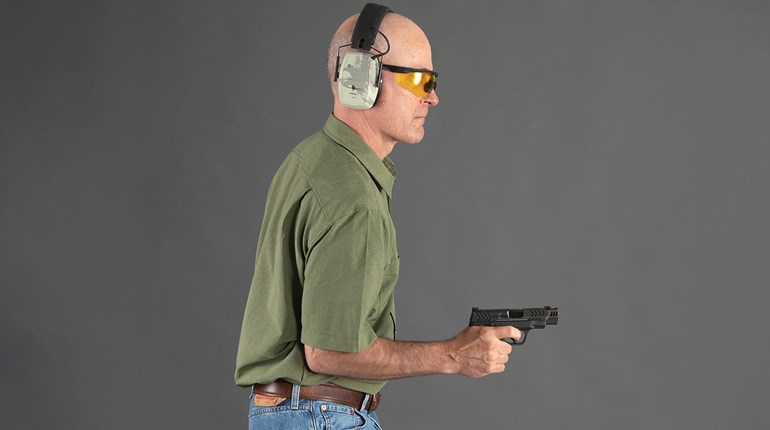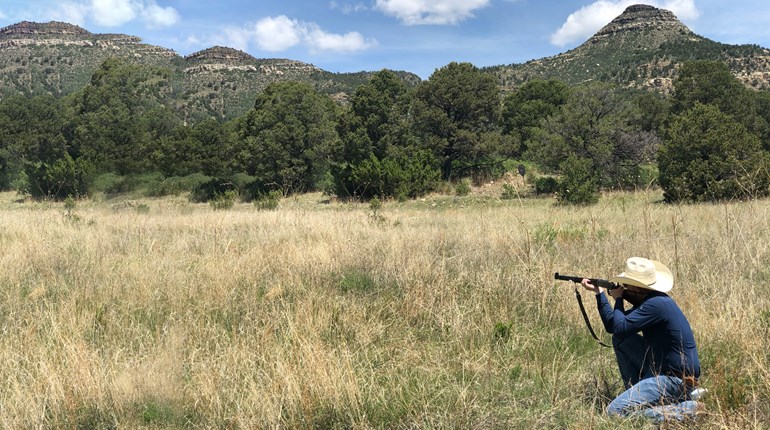
“Carry Life” finds a curious parallel between our week and the opening of the XXXI Olympiad. We’ll see performances over the next 16 days that defy explanation, an always-amazing amalgam of aptitude and ferocious dedication coached, cajoled and occasionally bullied into greatness. The athletes will indeed seem superhuman, and a fanciful notion that perhaps they have descended Mt. Olympus to entertain us, or deserve to be elevated there, will not seem farfetched. After a week at the Paulden, Ariz., Gunsite Academy, our perception is much the same—we’ve gotten a look at something very special indeed.
A little reflection should short-circuit any surprise. Gunsite—celebrating its 40th anniversary—is the continuing monument to the work of Lt. Col. John Dean “Jeff” Cooper (USMC). The varied accomplishments of his life don’t easily submit to summary, but one thing is beyond contestation: The serious contemporary handgunner owes him a huge debt. While “The Chairman” is rightly associated with full-sized, heavy-duty handguns (especially Browning-pattern 1911s in .45 ACP) and wide popularization of the Weaver stance, that’s a tiny fraction of his contribution.
As a modest celebration of and homage to the colonel and the larger Gunsite family, we therefore offer a reprise of his “Modern Technique.”The serious contemporary handgunner owes him [Col. Jeff Cooper] a huge debt.
Practical, repeatable marksmanship forms one component of what the colonel came to call the “Combat Triad.” It has five specific components as the basis for his now-famous “DVC” (Diligentia, Vis, Celeritas/accuracy, power, speed): The Weaver Stance; the Presentation (or, loosely, the draw); the Flash Sight Picture; the Compressed Surprise Break; and the Heavy-Duty Pistol. Together, they create the mechanics for sufficiently competent (in the sense of accurate) shots, in a sufficiently short time to be decisive.
Another component of the Triad is gun handling, and it captures the remaining aspects of firearm manipulation. It begins with the essential, if mundane—condition checks, loading and unloading—but proceeds to the literally life-saving: reliable, rapid reloads to malfunction clearing and beyond. Where “handling” ends and tactics begin is perhaps grounds for debate, though we know of no one who’s left thinking, “That’s it?”
But what sets Col. Cooper apart from every predecessor is his clarity on the requisite mindset for personal security. In every sense that matters, it is the foundation of the Combat Triad. The White/Yellow/Orange/Red continuum is not situational awareness per se, but rather a stepped, logical process by which non-essentials are pared away from decision-making when threats appear, up to and including the point at which shots are unavoidable:
But what sets Col. Cooper apart from every predecessor is his clarity on the requisite mindset for personal security.A “Black” state is often added in MIL/LE versions of the Color Codes, and suggests the tunnel-vision, adrenalized, super-heated state of the actual fight. In his inimitable way, Cooper dismissed the added code/color as “basura” (rubbish): “In condition Red (you are) ready … and there is no need to go beyond that …”
Perhaps it’s that end to “need” that makes Gunsite training so special, even after 40 years. Technique may transition and improve based on the experiences of instructors “who have seen the elephant,” but the primal nature of the challenge does not. Hardware has certainly done so (you don’t see the preponderance of 1911s that you once did). And the faces—in time’s unwelcome, relentless march—come, and must eventually go.
But Col. Cooper's own elucidation of the essentials remains bracingly blunt (here, at roughly 6:35) even 35 years hence. It seems to us that the years have sharpened the sense of a crucial common core, not just to the “Carry Life,” but to all clear thinking about the high-stakes moral paradox that survival has become: “Our purpose ... for all time and for the record, is to stop fights … That doesn’t mean that you disregard the value of human life; it means that your life is more important than his, because he’s trying to kill you, and he started it.”


































